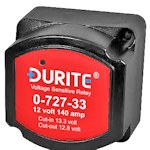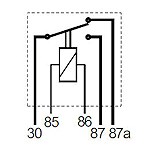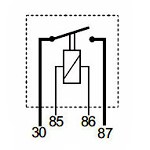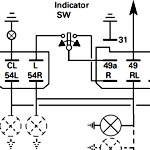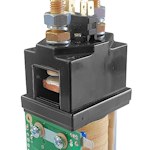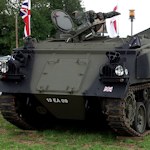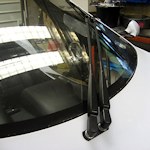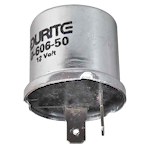To celebrate our new "in-store" Blog feature, we thought we'd populate it with a few of our old favourite Blogs that you can find posted on our external Blog sites around the internet, along with fresh new content that we can present to inform, explain, enlighten and entertain you on your visit to Arc Components Ltd. We hope you will continue to interact with us in the same way you have been doing over the years.
Please join in by posting comments, sharing and, of course, emailing us your thoughts. Also, please send us your projects and photos; we cannot promise to use them 'on review', but the team always appreciates your contribution and participation.
28 September 2022 | AdrianR
Heinrich first visited the Arc Components Ltd online shop early in 2021, and it took several conversations before realising the bespoke nature of his project, recreating a working replica of the Batman Movie Tumbler from the Dark Knight Trilogy.
Heinrich started his replica control panel selections with illuminated switches that formed custom banks of rocker switches, and he then moved on to the meters and gauges in a classic formation to compliment the aesthetic and period styles of the Batman trilogy. Later he selected core electrical products, including fuse gear, warning lights and brass-levered toggle switches for the finishing touches.
14 November 2017 | AdrianR
The battery split charge relay supplied at Arc Components Limited is a high load intelligent voltage sensitive relay unit fitted between batteries for an efficient way of charging a secondary battery whilst not affecting the charge performance of the primary start battery. Designed for effective management of batteries and popular with the mobile home and marine communities, where the start battery charging takes priority, and once the charge level is up, the unit switches over to charge the leisure battery.
The Durite 0-727-33 12 Volts 140 Amps Voltage-sensitive relay allows the split charging of a second battery; without discharging the primary/start battery, the relay makes at 13.3 Volts and breaks at 12.8 Volts.
3 November 2017 | AdrianR
This post covers the changeover switch relays covered in the range of auto electrical products at Arc Components Limited. The relays supplied in-store are configured to DIN 72552 terminal standardisation.
Many configurations of a changeover relay are used for automotive electrical circuit switching, each allowing a variation on the switch operation; versions include Normally Closed (NC or active circuit), latching and coil suppression. One of these, the latching relay, allows a mechanical (or in some cases an electronic) function that retains the switched position even when power to the coil is cut; helpful in conserving power, the line switch is reactivated (usually with a momentary push switch) only when the coil is energised again.
3 November 2017 | AdrianR
This post covers the Make and Break switch relays covered in the range of auto electrical products at Arc Components Limited. The relays supplied in-store are configured to DIN 72552 terminal standardisation.
Many configurations of a Make and Break relays are used for automotive electrical circuit switching, each allowing a variation on the switch operation; versions include "Normally Open" (NO) or "Normally Closed" (NC) operation, fused and line suppression.
30 October 2017 | AdrianR
The standardisation definition guide is presented to identify pin-out configurations on automotive electrical components available at Arc-Components.com. DIN 72552 is used by most high-end component and vehicle manufacturers when creating an automotive circuit.
Examples of Pin-in and Pin-out DIN numbering can be found on Switch Relays, Key switches, Wiper motors, etc. This definition guide will assist engineers when replacing or renewing components and wiring, where a DIN code number system has been presented.
Albright coils in their contactors are wound with Pull-in and Drop-out voltages, variations of those features can be engineered to suit particular applications. You can use this blog post in conjunction with the Arc Components Ltd Product Files to identify a solenoid contactor best suited for your application.
Coil voltages ranging from 6 to 240V are available, which are wound for D.C. operation. However, the majority of coils can be factory fitted (via an enquiry) with a bridge rectifier for use with A.C. supplies. Coils are wound with Pull-in voltages (coils at 20°C) of approximately 66% of the rated voltage (Continuous) or 60% (Prolonged, Intermittent Or Very Intermittent), and Drop-out voltage nominally greater than 10% of the rated voltage. Variations of these Pull-in and Drop-out figures can be engineered to suit particular applications.
Peter landed at the online store with his ambition to restore his acquisition of a British Army FV432 armoured personnel carrier; from the outset, the rapport between the team and Peter was evident.
Peter started his refurbishment selections naturally with consumables and relevant tools first, moving on to core electrical products, including fuse gear, warning lights, switches, electrical cables, harnessing sleeves and cable clips, before working his way round to internal lighting and external lighting solutions for finishing touches.
Although this blog post is historically nearly six years old, we find customers like to review it when designing a bespoke windscreen wiper solution on a kit car or sports car front windows, which is good enough reason to revive it and add it to the new project's blog here at Arc Components.com.
"I ended up using Arc Components Ltd as their product range had been referred to many a time on forums and NOVA International; their office was very helpful, answered technical queries and forwarded on scanned technical drawings to allow me to check dimensions. I ended up ordering two possible permutations; Arc-Components.com charges no UK postage on top of the web prices for large UK orders, which helped".
Many modern-day indicator flasher units available today can trigger a flashing circuit by pulse switching; old-style flasher units (like the Tin Can type) work differently and contain a bi-metallic strip. The strip comprises of two different conductive metals; riveted, brazed or welded together so that when a current is passed through, the two metals expand and contract at a different rate.
Often the cause of slow flashing or rapid flashing is the value of the current required to heat up and expand the metals. If you are a standard domestic motorist and your indicator flashing speed becomes erratic or slow, the recommendation is to get your vehicle checked out by a Professional. Causes can range from bulb failure (visually obvious or connection), cable problems (continuity), earth or ground joints and, in the case of additional trailer lighting, changing the characteristics of the circuit. One of the most common faults occurs when LED light bulbs (requiring less current) are replaced in the flasher circuit.
30 January 2017 | AdrianR
It took several visits and solution discussions at our trade counter before the inevitable question "what the heck are you building, Alan?" arose; the answer was a little unexpected... "A fully functional Dalek", was the reply. The reaction? We could safely say it was more leaning towards: 'One flew over the cuckoo's nest'. Dalek building projects are, after all, commonplace up and down the length of Britain, where every fan of the BBC's Dr Who series secretly harbours a longing to build themselves a full-sized Dalek one day. Most moments like these come and go due to time commitments; in Alan's case, time found its way onto his lap, and he knew exactly what he would do with it!

